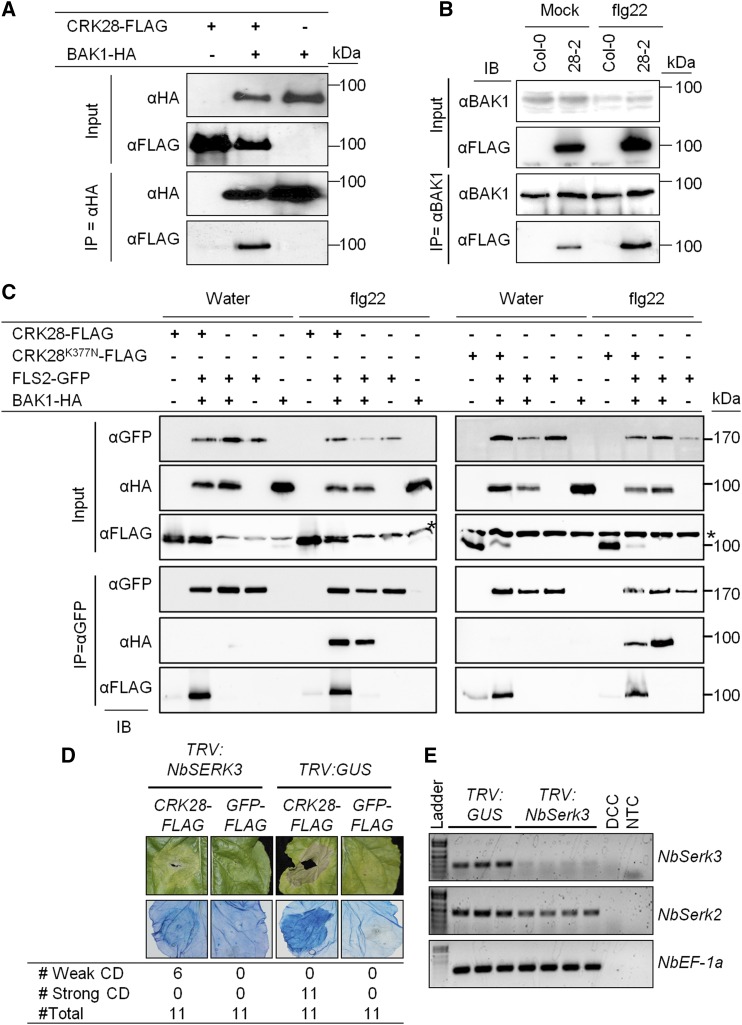Figure 6.
BAK1 associates with CRK28 in Arabidopsis and N. benthamiana, and silencing NbSerk3 reduces CRK28-mediated cell death. A, CRK28 Co-IPs with BAK1 in N. benthamiana. 35S:CRK28-FLAG and 35S:AtBAK1-HA were coexpressed in N. benthamiana and subjected to anti-HA IP. Proteins were then subjected to anti-HA and anti-FLAG immunoblotting. B, CRK28 Co-IPs with BAK1 in Arabidopsis. Col-0 and the npro:CRK28-FLAG expression line 28-2 were sprayed with flg22 or water and subjected to anti-BAK1 IP. Proteins were separated by SDS-PAGE and immunoblotted with anti-BAK1 and anti-FLAG antibodies. C, CRK28 and CRK28K377N associate with the FLS2/BAK1 immune complex in N. benthamiana. 35S:FLS2-GFP, 35S:BAK1-HA, 35S:CRK28-FLAG, and 35S:CRK28K377N-FLAG were coexpressed in N. benthamiana and subjected to anti-GFP IP. Proteins were then subjected to anti-GFP, anti-FLAG, and anti-HA immunoblotting (IB). The asterisk shows an anti-FLAG cross-reacting band. D, CRK28-mediated cell death in NbSerk3-silenced and control plants (top row), and Trypan Blue staining of dead tissue (bottom row). The table represents the number of leaves that showed weak or strong cell death (CD) per total number of leaves infiltrated. The leaf image with CRK28-FLAG expression after NbSerk3 silencing is representative of the weak cell death observed. E, RT-PCR showing the expression of NbSerk3 and NbSerk2 in silenced plants 3 weeks post infiltration with VIGS constructs. NbEF-1α was used as an endogenous control. DCC, DNA contamination control; NTC, no template control. All experiments were repeated at least three times with similar results.

